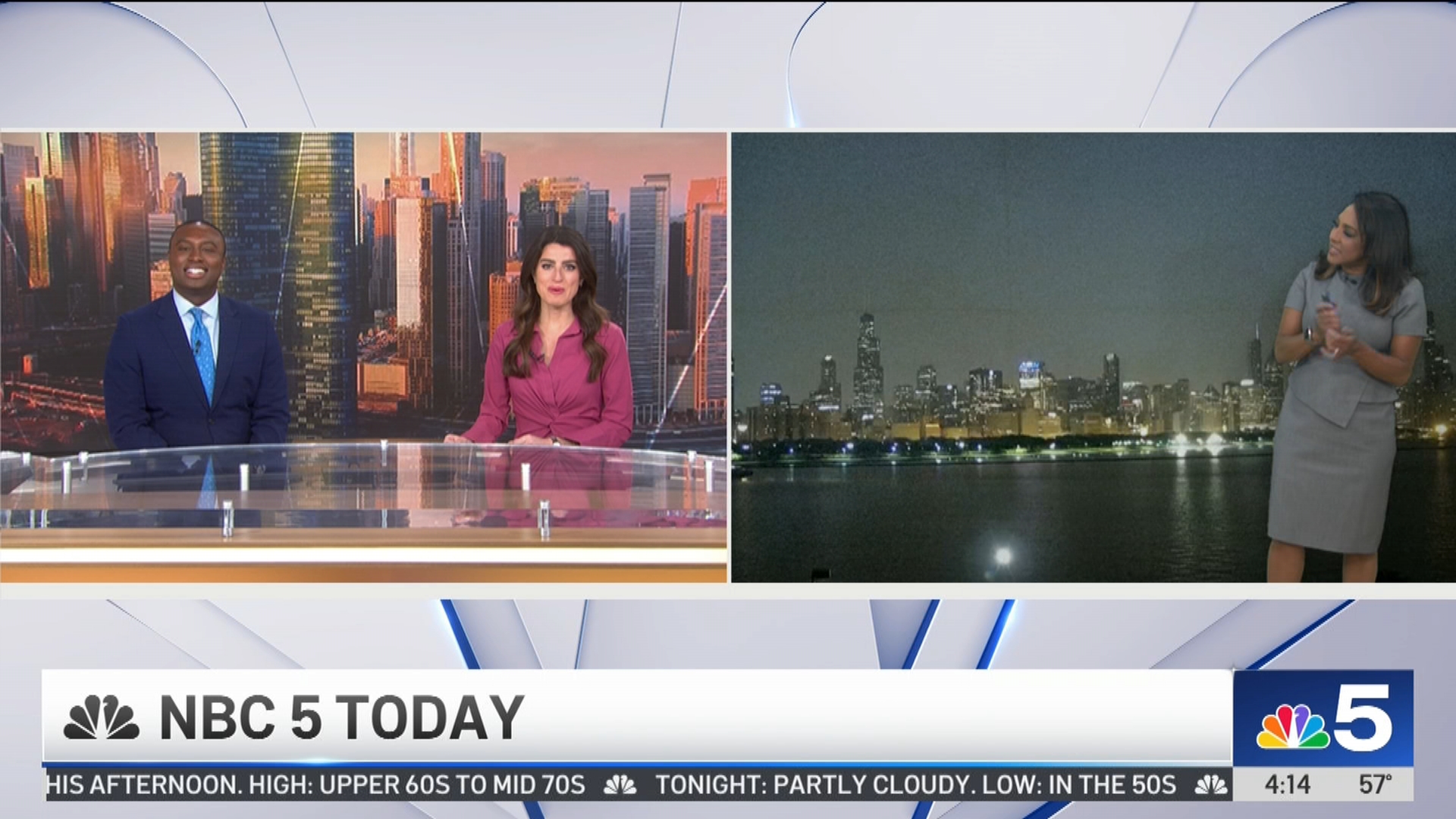An air quality alert has been extended for the Chicago area as "unhealthy" levels are expected to continue into the start of the weekend with wildfire smoke lingering in the area.
The poor air quality is expected to now last at least through Friday now, according to the National Weather Service.
Stream NBC 5 for free, 24/7, wherever you are.
That includes McHenry, Lake, Kane, DuPage, Kendall, Grundy, Cook and Will counties in Illinois and Lake, Porter, Newton and Jasper counties in northwest Indiana.
As of early Thursday, the air quality for much of northeast Illinois, including multiple suburbs to the north and some to the west, fell into the "unhealthy for sensitive groups" category, which ranks as level two on a scale of six. In other parts of the Chicago area however, the air quality was even worse, ranking at level three.
That poor air quality was also mixing with fog, Jeanes said, creating some lower visibility.

A real-time, interactive map of air quality from AirNow.gov can be found below:
Though skies will be hazy, it's hard to tell how close to the surface the smoke will get.
Feeling out of the loop? We'll catch you up on the news you need to know with the Chicago Catch-Up newsletter.
"We may smell a bit of smoke in the air today and tonight," Storm Team 5 Meteorologist Kevin Jeanes said.
The poor air quality also led the Illinois Environmental Protection Agency to declare an "Air Pollution Action Day" for the entire Chicago area, which are issued when widespread ozone or particulate levels are at or above the "unhealthy for sensitive groups" category for multiple days.
"Active children and adults, especially people with pulmonary or respiratory disease such as asthma, should limit prolonged outdoor activity," the National Weather Service warned.
The Illinois EPA also encouraged residents to avoid filling up cars with gas until after sunset, and grouping errands to minimize the number of trips taken. Carpooling and use of public transit are also highly encouraged on high pollution days, the EPA said.
Chicago's Office of Emergency Management and Communications said it was "monitoring conditions with the National Weather Service in Chicago" Thursday afternoon and "at this time Chicago’s air quality is at an unhealthy level."
What is the Air Quality Index?
According to officials, the Air Quality Index, or the AQI, is used by the Environmental Protection Agency to communicate to the public air quality levels, and how they can impact day-to-day life.
There are six different levels of air quality, and they’re all color-coded to illustrate changes in quality and how they impact residents.
Typically, anything above 100 is considered to be hazardous to at least some groups, and anything over 150 is considered to be “unhealthy,” posing issues to the general public.
How to find Chicago's AQI
AirNow provides a tool for residents to search their ZIP code to see what their forecasted air quality is, both in real time and for the days ahead.
For a more granular look, the website also offers information on different measurement stations around the area in real-time, allowing residents to track air quality in areas near their homes.
Early Thursday morning, Chicago's AQI, with a PM2.5 of 160, was listed in the "unhealthy" category.
What is PM2.5?
According to the Environmental Protection Agency, "PM stands for particulate matter (also called particle pollution): the term for a mixture of solid particles and liquid droplets found in the air."
"Some particles, such as dust, dirt, soot, or smoke, are large or dark enough to be seen with the naked eye. Others are so small they can only be detected using an electron microscope," the EPA states.
PM2.5 in particular involves "fine inhalable particles, with diameters that are generally 2.5 micrometers and smaller." By comparison, the average human hair strand is about 70 micrometers in diameter, or 30 times larger than these particles.
PM2.5 is one of five major air pollutants regulated by the Clean Air Act, which also includes ground-level ozone, carbon monoxide, sulfur dioxide and nitrogen dioxide.



